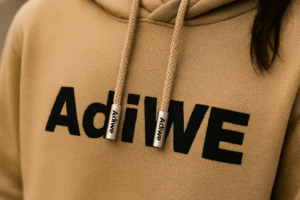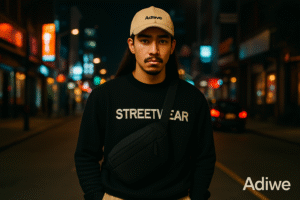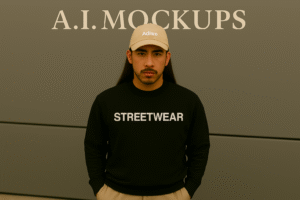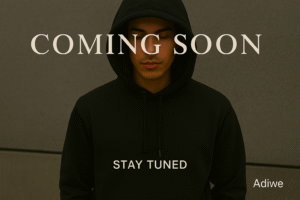Thinking successful streetwear just means printing on standard blanks? This often leads to generic products that fail to capture attention or build a loyal following for your brand.
Many iconic streetwear brands, including Stüssy, Supreme, BAPE, Off-White, Palace, and Fear of God, built their foundations on unique, custom designs, graphics, and specific garment choices, not just off-the-shelf items.
The story of streetwear is deeply intertwined with customization and personal expression. It wasn't just about clothes; it was about making a statement. As a manufacturer (Adiwe) specializing in custom streetwear for brands globally, we see how crucial that unique vision is. Let's look at how some legends began and what defines the scene.
Who Holds the Crown for Most Famous Streetwear Brand?
Trying to name the single "most famous" streetwear brand feels impossible, right? Chasing that level of fame without understanding how it's built can lead your own brand astray.
While subjective, Supreme is frequently cited as the most famous streetwear brand globally due to its hype, exclusivity model, high-profile collaborations, and cultural impact, originating from custom skate roots.
!
Fame in streetwear isn't just about sales volume; it's about influence, cultural relevance, and desirability. Supreme mastered the art of hype through limited drops of items often featuring their distinct, custom Box Logo design. It started as a skate shop catering to a specific subculture, creating products for that community. This authentic origin, combined with smart marketing and highly sought-after collaborations (often involving custom designs on classic silhouettes), propelled it to global fame. Other contenders like Off-White gained immense fame through Virgil Abloh's unique design language, recontextualizing everyday items with custom graphic treatments and signature details. Similarly, BAPE (A Bathing Ape) achieved iconic status with Nigo's instantly recognizable camo patterns and character designs – fundamentally custom visual assets applied across apparel and sneakers. The common thread? A strong, unique identity expressed through customized products that resonated deeply with a target audience, long before reaching massive scale. As a factory, Adiwe helps emerging brands build their unique identity through tailored manufacturing, understanding that fame often follows authenticity and distinctiveness.
Which Brand Kicked Off the Whole Streetwear Movement?
Wondering where it all began? Believing streetwear just appeared out of nowhere misses the crucial foundation laid by pioneers, making it harder to grasp the culture authentically.
Shawn Stüssy is widely credited with initiating the streetwear movement in the late 1980s by screen-printing his customized signature logo onto t-shirts and surfboards in Southern California.
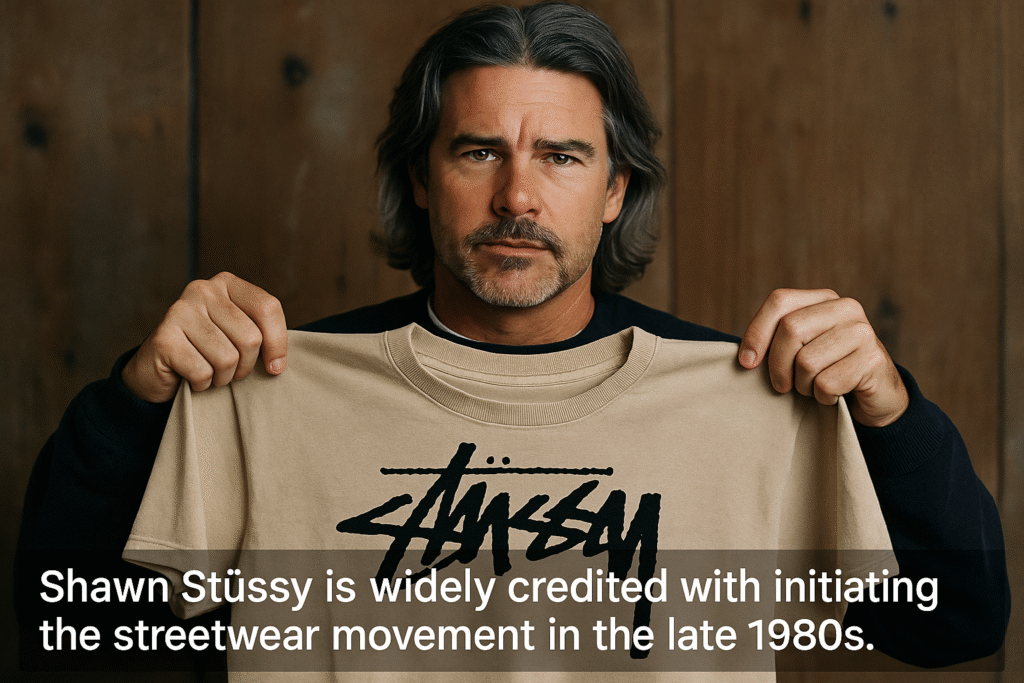
The birth of streetwear wasn't a planned corporate strategy; it grew organically from subcultures. Shawn Stüssy started shaping custom surfboards for friends and began scribbling his surname signature on them. He then put this signature onto basic t-shirts and caps to promote his boards at trade shows. People were more interested in the apparel than the boards. This accidental beginning tapped into a blend of surf, skate, punk, and early hip-hop cultures. The key was the custom signature logo – it was personal, unique, and represented belonging to a tribe. Stüssy wasn't just selling clothes; he was selling an identity built around his custom graphic. Other early influences contributed, like Dapper Dan in Harlem creating bespoke, high-fashion bootlegs for hip-hop artists, showcasing extreme customization. Brands like FUBU ("For Us, By Us") emerged later, explicitly building their identity around community and creating custom designs representing Black culture. This foundation highlights that streetwear's DNA is rooted in personal expression, community identity, and custom-made or customized items that stand apart from the mainstream. That spirit continues today, driving brands to seek manufacturers like Adiwe who can execute their unique, custom visions.
Which Fashion Brands Dominate Popularity Charts Today?
Seeing lists of "most popular" brands can feel overwhelming. Focusing only on the giants might make you overlook the diverse influences shaping today's fashion landscape, including powerful streetwear players.
Current popular fashion brand lists often mix luxury houses (like Gucci, Louis Vuitton), sportswear giants (Nike, Adidas), fast fashion retailers (Zara, Shein), and highly influential streetwear labels (Supreme, Fear of God sometimes appear).
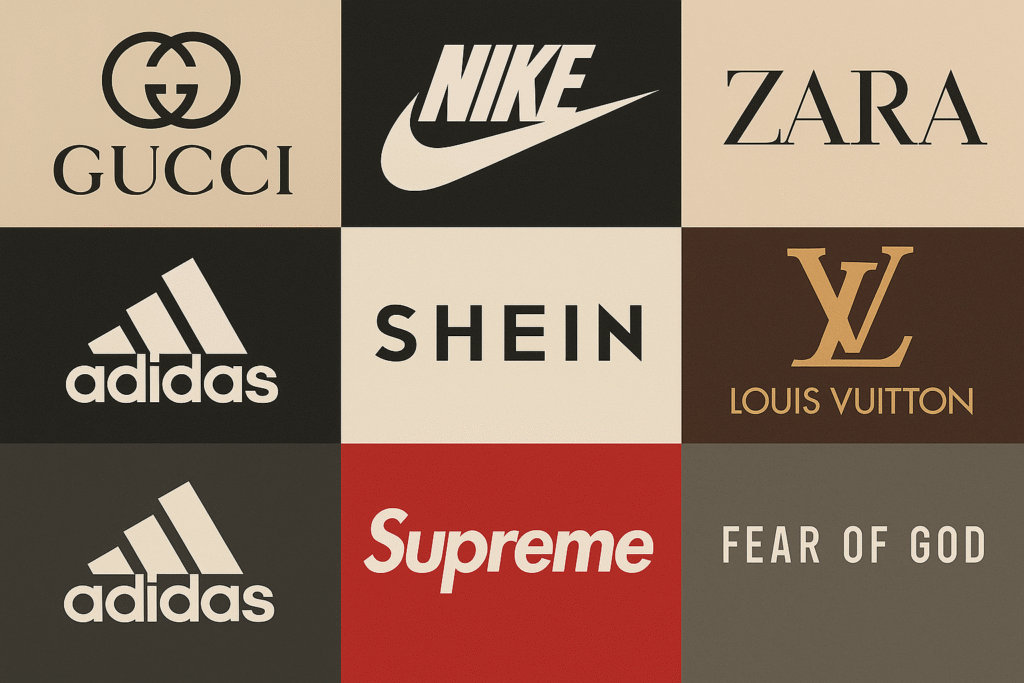
Fashion popularity today is complex, blending different market segments. Luxury brands haven't just stayed in their lane; they actively incorporate streetwear elements – hoodies, sneakers, graphic tees, collaboration models – often using custom designs to appeal to younger consumers. Sportswear titans Nike and Adidas are arguably foundational to streetwear through sneaker culture and iconic apparel like tracksuits. Their popularity relies heavily on constant innovation, custom collaborations with designers and athletes, and leveraging their heritage designs. Then you have streetwear brands that have achieved mainstream recognition. Supreme's inclusion on such lists speaks volumes about its cultural penetration. Newer labels like Fear of God, founded by Jerry Lorenzo, demonstrate how a brand can rise to prominence by meticulously blending luxury sensibilities with streetwear silhouettes, focusing heavily on custom fabric development, unique fits, and elevated basics. Palace Skateboards, similar to Supreme, built its popularity from authentic skate roots combined with unique, often humorous custom graphics and collaborations. The takeaway is that popularity comes in many forms, but brands making a significant impact often do so through strong identity and custom-designed products that capture the zeitgeist, whether they start in luxury, sportswear, or pure streetwear.
What Exactly Defines Streetwear Design Aesthetics?
Is "streetwear design" just baggy clothes and logos? Misunderstanding the core elements can lead to designs that feel inauthentic or fail to connect with the target audience.
Streetwear design aesthetics typically involve comfortable silhouettes (often hoodies, tees, sweats), prominent graphics or logos, influences from subcultures (skate, music, art), quality materials, and an emphasis on customization or exclusivity.
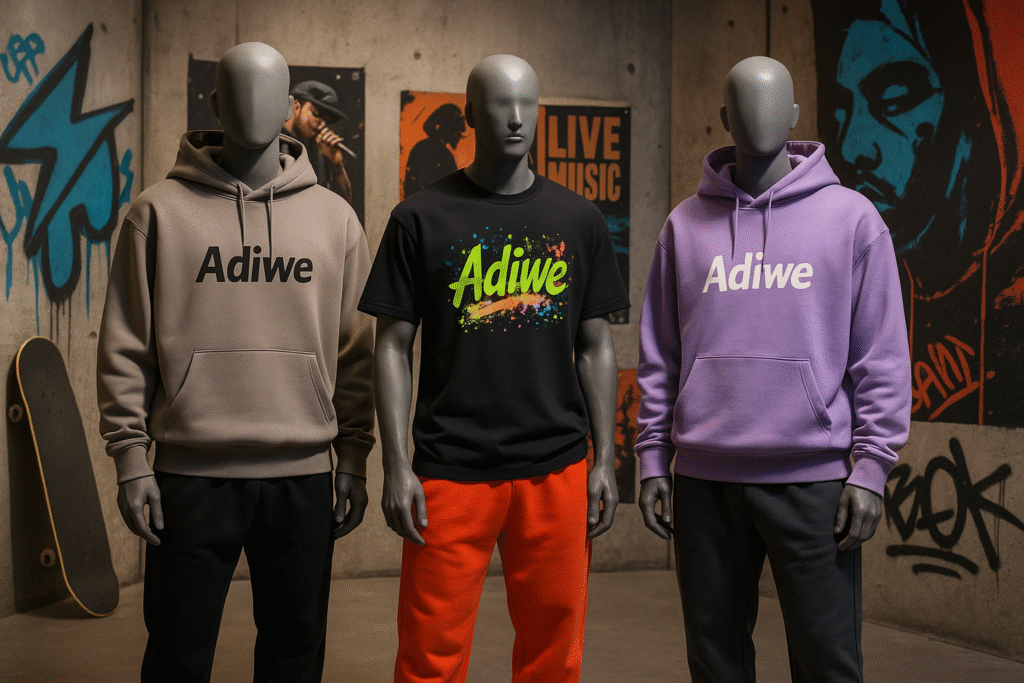
Streetwear isn't a single uniform, but a collection of stylistic elements rooted in self-expression and cultural identity. Let's break down key components:
- Core Garments: The foundation often includes t-shirts, hoodies, sweatshirts, sneakers, caps, jackets (bombers, coaches), and utilitarian pants (cargos, track pants). Comfort and practicality are usually key.
- Graphics & Branding: This is central. Bold logos (like Supreme's Box Logo), illustrative graphics, photo prints, provocative text, or artistic collaborations are common. The graphic often tells the story or signals belonging. This is inherently about custom visual communication.
- Fit & Silhouette: While historically associated with baggy fits (stemming from skate and hip-hop), modern streetwear encompasses varied silhouettes, including tailored or oversized options. The cut itself can be a point of custom design.
- Cultural References: Designs frequently draw inspiration from music genres (hip-hop, punk), skateboarding, art, sports, vintage clothing, or social commentary. Authenticity in referencing is valued.
- Quality & Material: While not always luxury, there's often an emphasis on durable, comfortable fabrics like heavyweight cotton fleece or jersey. Brands like Fear of God elevate this with custom-developed textiles. As manufacturers, we focus on delivering this quality for clients like Fifty Fifty.
- Customization/Exclusivity: Limited edition drops, unique colorways, collaborations, and subtle custom details (labels, stitching) enhance desirability and individuality.
| Design Element | Description | Example related to Customization |
|---|---|---|
| Graphics/Logos | Bold visuals, brand marks, artwork communicating identity | Supreme Box Logo, BAPE Camo (Unique IP) |
| Silhouettes | Comfort-focused, often rooted in sportswear/workwear | Custom oversized hoodie fit |
| Materials | Often quality cottons, fleece, jersey; sometimes technical fabrics | Fear of God's custom fabric sourcing |
| Cultural Refs | Drawing from music, skate, art, etc. | Graphics referencing specific subcultures |
| Exclusivity | Limited drops, unique details enhancing desirability | Custom labels, unique collab designs |
Ultimately, streetwear design is about creating identity through clothing, often starting with a unique, custom idea applied to relatable garments.
Conclusion
Many iconic streetwear brands achieved success not with generic blanks, but through unique vision realized in custom designs, graphics, and quality. Building your own brand requires that same focus on distinction.

